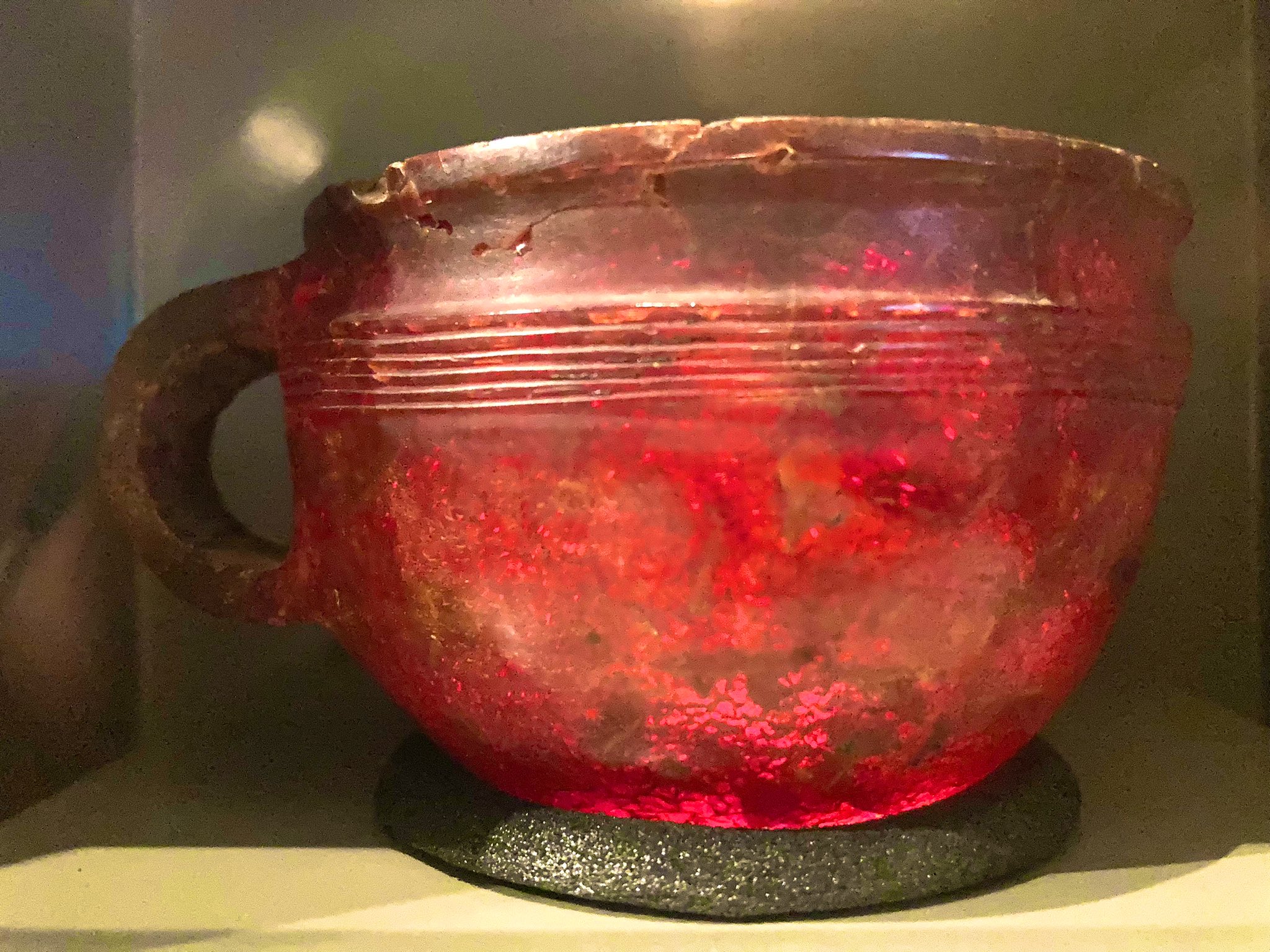Hove Amber Cup (1750-1550 BC); one of Britain’s most important Bronze Age finds, discovered whilst excavating a burial mound in Palmeira Avenue in 1856. It dates to about 3200 years ago and is made from one piece of Baltic Amber, this suggests trading links between this part of Britain and the Baltic regions where such amber was extracted. The Hove Amber Cup is one of only two found in Britain; the other was in Dorset. However, two are not of same style of craftsmanship.
It was discovered in Hove in 1856 AD, when a huge burial mound, known as Hove Barrow, was excavated during construction of Palmeria Avenue. About 9ft below the surface of the barrow workmen found an ‘Oak’ coffin, belonged to Wessex Culture (2000-1400 BC), which was documented at the time as being carved from a single tree trunk. Within the coffin were fragments of human skeletal remains, a perforated whetstone, a bronze dagger, a stone axe hammer, and a complete cup made from amber. Based upon the results of the radiocarbon dating of a piece of the oak, it most likely dates to Early to Mid Bronze Age, around 3500 years ago.
The amber cup has a band of incised parallel grooves encircling the body of the cup, except under the handle, as well as incised grooves on the handle of the cup. Two chips are present on its rim, it is suggested the chip on the left of the handle happened when it was accidentally struck with a spade by the workman who found it. It has been associated with a small group of other “unstable” cups with round bottoms, made of precious materials and found in north-western Europe. Most are in gold, but also silver, amber and shale. Ringlemere Cup and Rillaton Cup are two British gold cups. The amber would have come from the Baltic region, and the group suggest early trade links between Britain and Europe.
It is the best preserved of only two such Bronze Age vessels known in Europe. The axe head and perforated whetstone are also rare objects. This implies the Hove Barrow was an important burial monument. The cup is made from a single piece of amber from northern Europe, suggesting trade links between England and the Baltic.
Baron Goldsmid, owner of the land where the cup was discovered, donated it to the museum, in the early stages of its formation, in 1857. When the museum reopens, this beautiful cup can be seen on display in the Elaine Evans Archaeology Gallery; now preserved in the Hove Museum and Art Gallery.
📷 : Credit to the Owner
#archaeohistories






